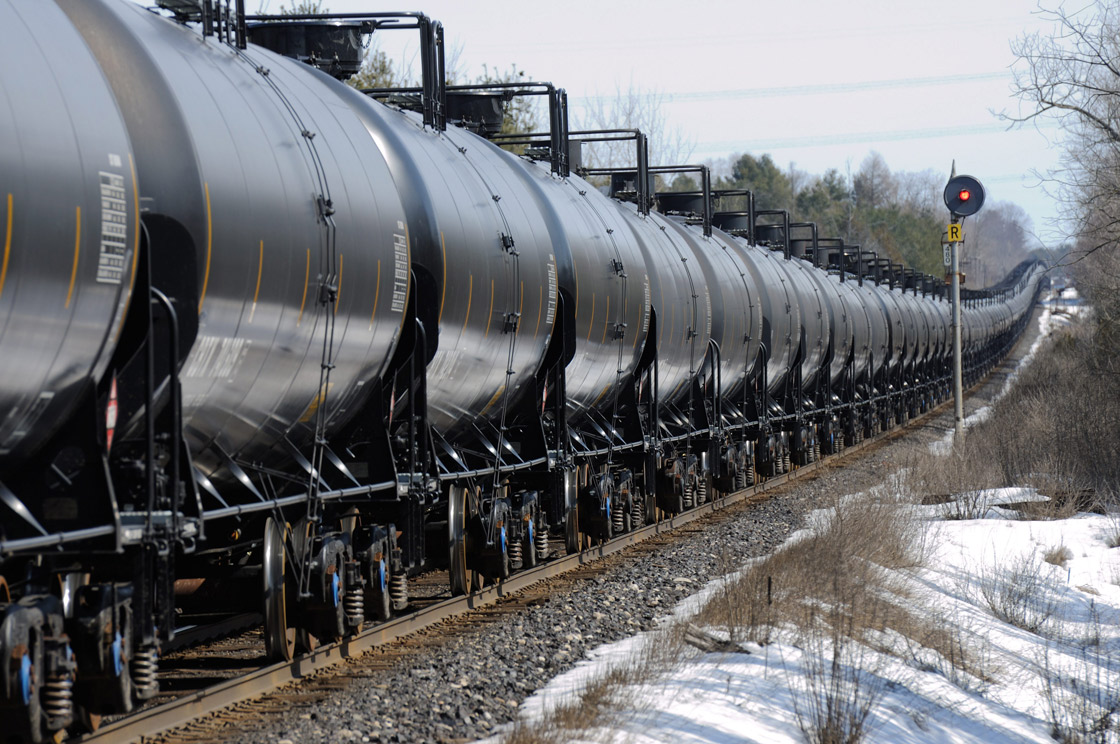What happens if you stop a pipeline?

Economic catastrophe, say some. Environmental salvation, others argue.
But so far, one of the most immediate impacts of delayed or stymied pipelines is more oil transported by other methods.
The amount of oil shipped by rail in Canada has increased several hundredfold in the past few years – from 8,062 metric tonnes of crude oil and bitumen in 2009 to more than 4.3-million in 2012, according to Transport Canada.
Last year, says CN Rail spokesman Mark Hallman, the company shipped 33,000 carloads of oil, with about 600 barrels per car. This year, they expect to double that.
CN Rail refuses to say whose oil it is; that’s “confidential and proprietary information,” Hallman said.
“Lets put it this way,” he said. “It was a very, very small part of our business dating back to, say, about 2010. The real strength of the growth has been since 2011 and 2012 – that’s when the business came on strong.”
Hydrocarbon giant Enbridge is waiting – on approval for its Northern Gateway pipeline in British Columbia and the go-ahead to switch direction and increase capacity for its Line 9, which runs from Sarnia, Ont. to Montreal. Last year, the company opened its first train loading facility Berthold, North Dakota.
Right now Enbridge has the capacity to ship 80,000 barrels of oil a day; when it opens its second loading facility in Cheechum later this year, that will increase to about 112,000 barrels a day.
- Canadian man dies during Texas Ironman event. His widow wants answers as to why
- On the ‘frontline’: Toronto-area residents hiring security firms to fight auto theft
- Honda expected to announce Ontario EV battery plant, part of a $15B investment
- Ikea Canada cut prices on 800 items this month. Which ones?
That’s still a tiny fraction of the company’s total. But it’s indicative of a shift towards rail as pipelines face increased opposition and regulatory delay on both sides of the border.
“The growth in rail transport of oil is a direct result of … the problems being encountered by pipeline operators,” said Enbridge spokesman Ken Hall.
“This is very new for Enbridge,” he added later. “We’re looking at every opportunity as they come up and we do anticipate that there will be some growth in that aspect of the market.”
Is that a victory for the oilsands’ opponents?
Not necessarily.
Manhattan Institute researcher Diana Furchtgott-Roth compared accident rates for trains, pipelines and trucks in the United States and found trains and trucks shipping oil are significantly more accident-prone than their pipeline counterparts.
That danger was driven home on May 21, 2013, when 91,000 litres of oil spilled from a CP Rail car near Jansen, Saskatchewan. The rail line was reopened later that same evening “following the completion of full track repair work and mandatory inspections,” spokesman Ed Greenberg said in an email.
It’s too early to know why the spill happened, Greenberg said. “A full investigation has been launched to determine not only cause, but what lead to the cause. It will be an extensive review of what happened.”
“Pipelines are three times as safe as trains,” Furchtgott-Roth argues, once you adjust for tonnes shipped per mile. And, she says, the frequency of accidents involving oil on trains is going up, while there are comparatively fewer pipeline accidents every year.
Not everyone agrees: “In terms of their overall safety records, they’re comparable,” CN’s Hallan said.
And some environmentalists point out that while train spills may be more frequent, they also tend to be smaller.
“We are concerned about all forms of transport,” said John Bennett, executive director of the Sierra Club of Canada. “We’re particularly concerned about this move to trains without proper regulation.”
Years after a 700,000-litre spill following a train derailment near Alberta’s Lake Wabamun, Bennett argues, laws governing the transport of oil by rail still aren’t keeping pace with exponential growth in the amount of oil on trains.
But he thinks the increase in train travel has less to do with pipelines than with “where the oil is and where they want to take it”: The surge in hydrocarbons transported by rail from North Dakota’s Bakken, for example, is because that’s where it was found, he said, not because a proposed pipeline was rejected.
“Why should we be stepping back and saying, ‘We need to build this now’? We don’t.”
One thing is certain: Rail cars can’t carry nearly as much oil as pipelines. For environmentalists who want to see Canada’s bitumen stay in the ground, that’s good news; for energy companies and those who argue the country’s economic wellbeing depends on oilsands expansion, not so much.
“The negative impacts would be felt in every province, not just in the oil patch,” if pipelines don’t go through, predicts Enbridge’s Hall. “Right across the country there would be evidence of the economic loss.”
Read Part 5: Extracting info: Why’s it so hard to get the goods on oil spills?




Comments